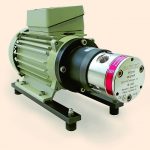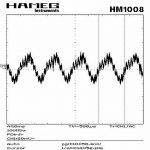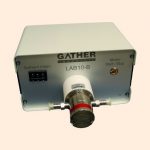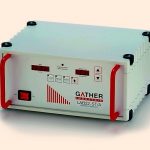A process generally undergoes initial development in a laboratory and is then made production-ready in a pilot or mini plant. During this scale-up, a range of different problems can emerge, e.g. regarding the way temperatures behave. For example, a process could be endothermic in the laboratory but become exothermic in production. How pumps behave in relation to peripheral equipment may change under full-scale production conditions.
Dosing pumps with multifunctional extensions for different pump types are often used in laboratories but do not generally offer very wide temperature or pumping ranges. However, when scaling up, these aspects take on major significance. Gather’s magnetic-driven pumps are available in so many different variants that the pumping and control technology can be retained in the event of scale-ups from laboratory to production via a mini or pilot plant. The company cooperates with the chemical industry, institutes and universities to simplify process development from the initial laboratory trials through to production readiness.
Equipped for any requirement
The requirements for pumps vary considerably. New products are developed in the laboratory and the initial production capabilities are tested using small quantities. Next, the concept is made production-ready under real conditions in a mini plant. The scale-up of the new chemical production process then takes place in the production plant. 1:8000 scale-ups are the norm today.
The step from the laboratory to the mini plant and from there to the actual production line entails a multitude of obstacles which must be overcome by the equipment and instruments. To enable modern measurement and control technology to be used for small quantities, for example, powerful pumps are required that can pump even tiny amounts of material pulsation-free, thereby guaranteeing precise and reproducible metering. The pumps also need to be made of chemically and thermally resistant materials such as stainless steel, Hastelloy, titanium or other special alloys.
The (variable speed) drive systems which are used must be universally suitable and easy to integrate into measurement and control systems. The pump system must also fulfil several other needs of the lab, mini plant and production line:
- Maximum flexibility is essential when different pump systems (displacement and turbine pumps) are used in the lab.
- Hermetically sealed pumps must be chosen in mini plants, especially in the chemical industry, in order to rule out possible health hazards. These pumps need to convey very small amounts pulsation-free across the largest possible measuring ranges and they must also be capable of pumping hot solvents for cleaning the system. To prevent downtime, they must have the same service life as a process pump because, ultimately, small-scale production under real conditions is taking place – something that should never be forgotten. The pumps are integrated in a control loop (e.g. a flowmeter) for better control and evaluation. The interaction between the measurement and control technology on the one hand and the drive and control technology on the other should map actual production conditions to enable time and costs to be saved.
- The demands on pump systems in a production plant are similar to those in a mini plant. However, the process parameters are relatively fixed, so that a high level of flexibility is no longer necessary. A long service life and easy maintenance are major issues because downtime must be avoided. Furthermore, the pumps are operated in a control loop, which is integrated in the production planning, to ensure end-product quality documentation and a high level of automation.
- Although these demands may at first seem very different, it is soon evident that they can be reduced to two core needs: pulsation-free pumping by chemical process pumps and multifunctional drive technology.
Practical implementation
The first of these needs is quickly satisfied. All Gather pumps (both turbine and gear) have pulsation-free pumping characteristics and are hermetically sealed by the magnetic coupling (compliant with the clean air guidelines of TA-Luft). However, “pulsation-free” can be interpreted in different ways. A distinction should be made here between oscillation and pulsation. Gear pumps oscillate and are always pulsation-free because they do not generate distinct pulsations like simple diaphragm or piston pumps. The term pulsation is often used when actually oscillation is meant.
How little a Gather gear pump oscillates is shown by the values recorded using a piezo quartz. Its oscillation is less than 10 mbar and practically imperceptible to flowmeters at this level and frequency. Dosing reliability is significantly increased because there is also no strong oscillation of the control loop as a whole. Gather pumps have a robust design for maximum durability and reliability.
Different drive technologies are available specifically for laboratories, pilot plants and production lines as well as various non-specific models. They are based on the tried-and-tested LAB drive and control series. LAB 10 is the classical compact laboratory drive. It is a simple DC servo motor installed in a housing and its speed can be adjusted either with a potentiometer or an external setpoint (0…10 V, 0…20 mA). It can be used to drive both gear and turbine pumps.
The LAB 20 and LAB 22 controllers are universally suited from the lab right through to production. Since they are mainly assisted by a frequency converter, the programming parameters can even be transferred to plant concepts for explosive atmosphere (Atex) and/or specific user control standards.
Cost and time savings included
The institutes, universities and industrial enterprises Gather collaborates with praise the major time savings that are possible when Gather products are used to take a process all the way from the laboratory through to the final production plant. The modular pump systems enable easy adaptation to changing pump, temperature and pressure conditions. The especially time-consuming modification of control parameters to coordinate systems at the different development stages is virtually eliminated.
Detailed overall pump concepts – including the necessary drive technology – therefore help not only reduce costs but also get products ready for market faster.
www.cpp-net.com search: cpp0117gather
Sven Borghoff
Sales Manager,Gather Industrie
Share:










